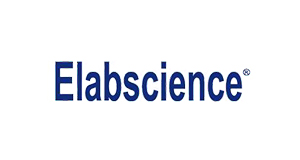Recombinant Rat Lp-PLA2/Pla2g7 protein (His tag)
Recombinant Rat Lp-PLA2/Pla2g7 protein (His tag)
Artikelnummer
ELSPDMR100018-100
Verpackungseinheit
100 µg
Hersteller
Elabscience Biotechnology
Verfügbarkeit:
wird geladen...
Preis wird geladen...
Abbreviation: Lp-PLA2;Pla2g7
Target Synonym: Platelet-activating factor acetylhydrolase;Pla2g7;EC:3.1.1.47;rCG_43740
Target Species: Rat
Expression Host: HEK293 Cells
Fusion Tag: C-His
UNIProt ID: Q5M7T7
Background: Secretory phopholipase A2 is an enzyme that hydrolyses the Sn-2 ester bond of phospholipids, generating free fatty acids and lysophospholipids. Most secretory PLA2s are stored in cytoplasmic granules and are released in the extracellular environment on appropriate cell activation. Thus, they are present at higher concentration in the plasma and biologic fluids of patients with systemic inflammatory, autoimmune, or allergic disease, such as acute pancreatitis, rheumatoid arthritis, bronchial asthma, and allergic rhinitis. Also known as Lp-PLA2, PLA2G-VII is a plasma enzyme bound to lipoproteins: 80% bound to LDL, 15%-20% to HDL, and the remainder to VLDL (4-6). It is produced in major by mature macrophages and activated platelets. In contrast to other classical sPLA2s, PLA2G?VII has poor specificity toward Sn-2 long chain fatty acids, unless heavily oxidized, and undergoes the catalysis of its substrates in the aqueous phase rather than at the interfacial surface of lipids. Thus, it has high specificity for water-soluble phospholipids in plasma including oxidatively?modified phospholipids and platelet-activating factor (PAF). Because of the latter activity, it is also known as PAF acetylhydrolase (PAF-AH).
Sequence: Met1-Asn440
Purity: > 95 % as determined by reducing SDS-PAGE.
Formulation: Lyophilized from sterile PBS, pH 7.4.
Normally 5 % - 8 % trehalose, mannitol and 0.01% Tween80 are added as protectants before lyophilization.
Please refer to the specific buffer information in the printed manual.
Endotoxin: Please contact us for more information.
Target Synonym: Platelet-activating factor acetylhydrolase;Pla2g7;EC:3.1.1.47;rCG_43740
Target Species: Rat
Expression Host: HEK293 Cells
Fusion Tag: C-His
UNIProt ID: Q5M7T7
Background: Secretory phopholipase A2 is an enzyme that hydrolyses the Sn-2 ester bond of phospholipids, generating free fatty acids and lysophospholipids. Most secretory PLA2s are stored in cytoplasmic granules and are released in the extracellular environment on appropriate cell activation. Thus, they are present at higher concentration in the plasma and biologic fluids of patients with systemic inflammatory, autoimmune, or allergic disease, such as acute pancreatitis, rheumatoid arthritis, bronchial asthma, and allergic rhinitis. Also known as Lp-PLA2, PLA2G-VII is a plasma enzyme bound to lipoproteins: 80% bound to LDL, 15%-20% to HDL, and the remainder to VLDL (4-6). It is produced in major by mature macrophages and activated platelets. In contrast to other classical sPLA2s, PLA2G?VII has poor specificity toward Sn-2 long chain fatty acids, unless heavily oxidized, and undergoes the catalysis of its substrates in the aqueous phase rather than at the interfacial surface of lipids. Thus, it has high specificity for water-soluble phospholipids in plasma including oxidatively?modified phospholipids and platelet-activating factor (PAF). Because of the latter activity, it is also known as PAF acetylhydrolase (PAF-AH).
Sequence: Met1-Asn440
Purity: > 95 % as determined by reducing SDS-PAGE.
Formulation: Lyophilized from sterile PBS, pH 7.4.
Normally 5 % - 8 % trehalose, mannitol and 0.01% Tween80 are added as protectants before lyophilization.
Please refer to the specific buffer information in the printed manual.
Endotoxin: Please contact us for more information.

 English
English










